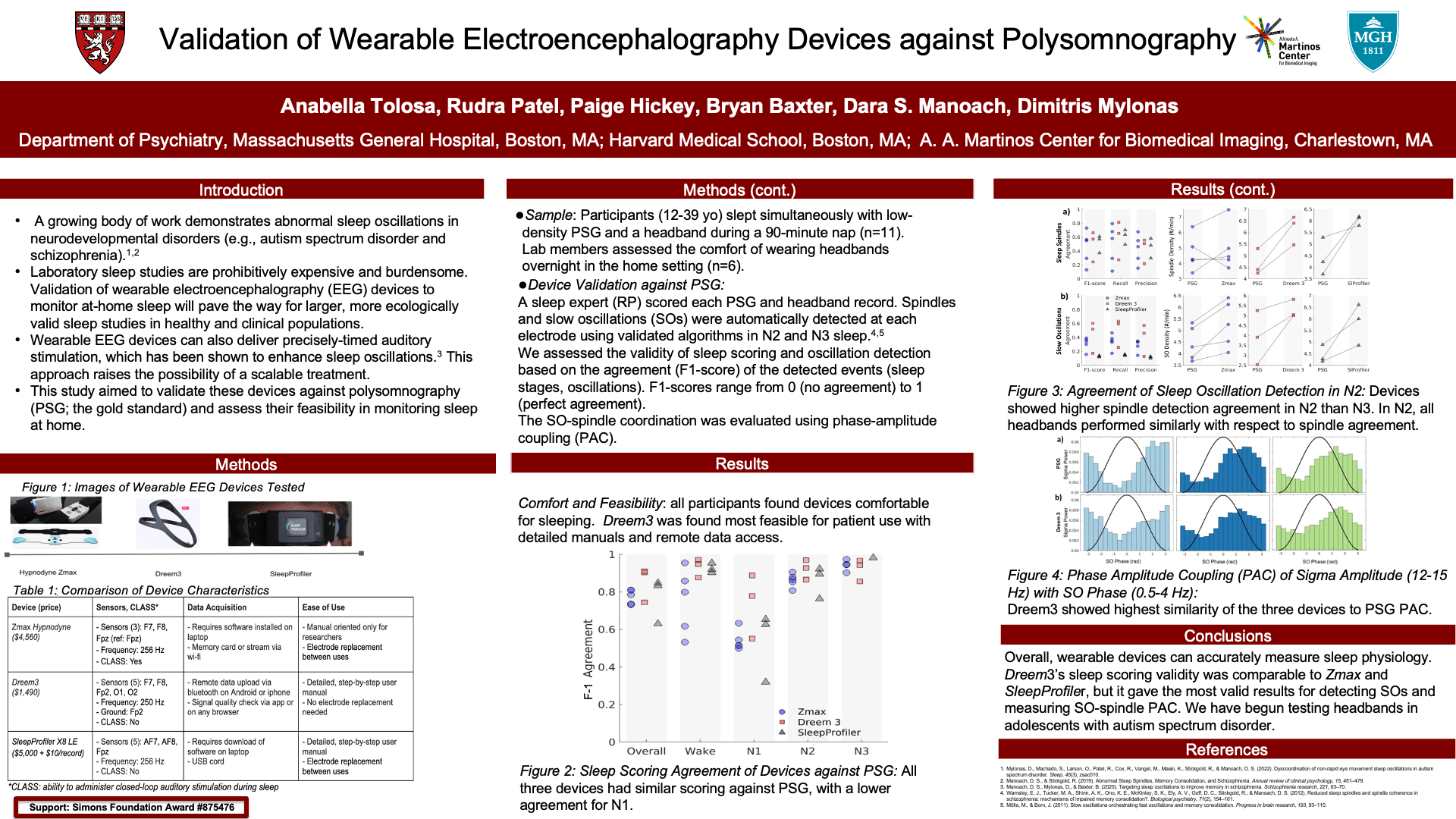Scientific Abstract
Background: Traditional laboratory sleep studies are expensive and limited in sample size. Validation of wearable electroencephalography (EEG) devices to monitor at-home sleep will pave the way for larger, more ecologically valid sleep studies in healthy and clinical populations. This study aimed to validate these devices against polysomnography (PSG; the gold standard) and assess their comfort and feasibility in monitoring sleep at home.
Methods: Participants ages 12-39 years old slept with low-density PSG and one of three headbands (Zmax Hypnodyne, Dreem3, and SleepProfiler) concurrently during a 90-minute nap (n=11). Lab members also wore devices overnight at home to assess comfort and feasibility of setup (n=6). Devices were selected based on criteria such as ease of use, data acquisition, and ability to administer closed-loop auditory stimulation. A sleep expert scored each PSG and headband record. Device validation against polysomnography was based on F-1 score agreements of sleep architecture, sleep oscillation detection, and slow oscillation(SO)-spindle coupling. F-1 scores range from 0 (no agreement) to 1 (perfect agreement). The SO-spindle coordination was evaluated using phase-amplitude coupling (PAC).
Results: All participants found devices comfortable for sleeping. All three devices had a similar sleep scoring agreement against PSG, with a lower agreement for N1. Devices showed higher spindle detection agreement during N2 than N3 compared to PSG. In N2, all devices performed similarly with respect to spindle agreement. Dreem3 had greater SO detection agreement with PSG, possibly reflecting that Zmax and SleepProfiler use a frontal electrode as the reference which alters SO morphology and affects SO detection while Dreem3 uses occipital references. Dreem3showed the highest similarity of the three devices to PSG PAC.
Conclusions: Overall, wearable EEG devices can accurately measure sleep physiology. Dreem3 proved most robust out of the three devices tested with the most valid results for detecting SOs and measuring SO-spindle PAC. We are currently using Dreem3 to measure sleep physiology in adolescents with Autism Spectrum Disorder.
Search posters

